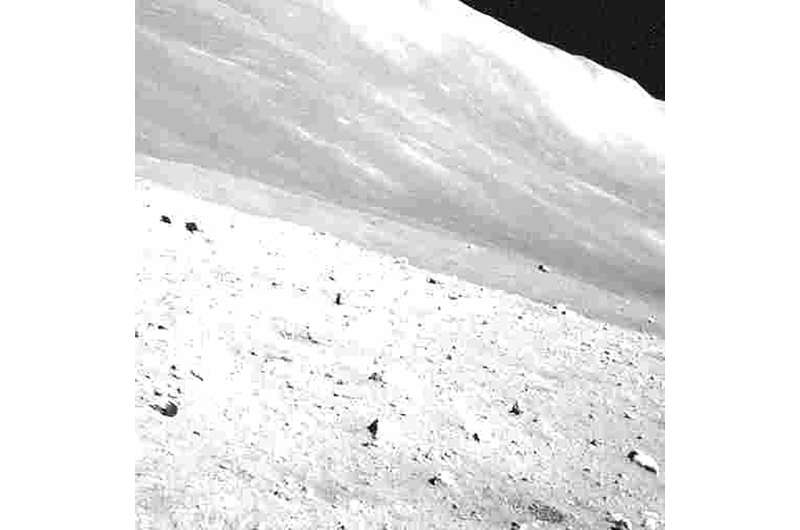Space travel and exploration was never going to be easy. Failures are sadly all too common but it’s wonderful to see missions exceed expectations. The Japanese Space Agency’s SLIM lunar lander was only supposed to survive a single day but it’s survived three brutal, harsh lunar nights and is still going. The temperatures plummet to -170C at night and the lander was never designed to operate into the night. Even sat upside down on the surface it’s still sending back pictures and data.
Continue reading “Japan’s Lunar Lander Survives its Third Lunar Night”Hayabusa2 Fires an Anti-Tank Warhead at Asteroid Ryugu

Last week, the Japanese Aerospace Exploration Agency‘s (JAXA) dropped an explosive warhead on the surface of asteroid 162173 Ryugu. You might think this was the opening line of an entirely-readable science fiction novel, but it’s totally true. The operation began on April 4th, when the Hayabusa2 spacecraft sent its Small Carry-on Impactor (SCI) down to Ryugu’s surface and then detonated it to create a crater.
Continue reading “Hayabusa2 Fires an Anti-Tank Warhead at Asteroid Ryugu”1st Images from New NASA/JAXA GPM Rainfall Measuring Satellite Capture Tropical Cyclone in 3D

KENNEDY SPACE CENTER, FL – Weather researchers worldwide now have the ability to capture unprecedented three-dimensional images and detailed rainfall measurements of cyclones, hurricanes and other storms from space on a global basis thanks to the newest Earth observing weather satellite – jointly developed by the US and Japan.
NASA and the Japan Aerospace Exploration Agency (JAXA) have now released the first images captured by their Global Precipitation Measurement (GPM) Core Observatory satellite.
GPM soared to space on Feb. 27, exactly one month ago, during a spectacular night launch from the Japanese spaceport at the Tanegashima Space Center on Tanegashima Island off southern Japan.
The newly released series of images show precipitation falling inside a vast extra-tropical cyclone cascading over a vast swath of the northwest Pacific Ocean, approximately 1,000 miles off the coast of eastern Japan.
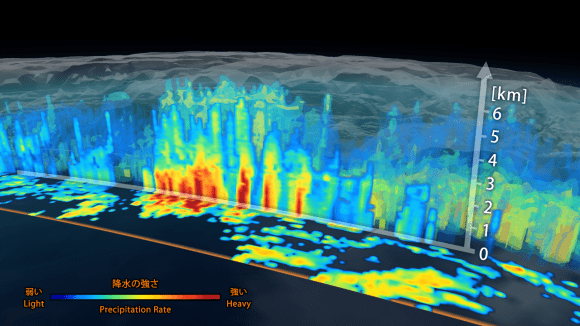
“It was really exciting to see this high-quality GPM data for the first time,” said GPM project scientist Gail Skofronick-Jackson at NASA’s Goddard Spaceflight Center in Greenbelt, Md., in a NASA statement.
“I knew we had entered a new era in measuring precipitation from space. We now can measure global precipitation of all types, from light drizzle to heavy downpours to falling snow.”
The imagery was derived from measurements gathered by GPM’s two advanced instruments: JAXA’s high resolution dual-frequency precipitation (DPR) radar instrument (Ku and Ka band), which imaged a three-dimensional cross-section of the storm, and the GPM microwave imager (GMI) built by Ball Aerospace in the US which observed precipitation across a broad swath.
“The GMI instrument has 13 channels that measure natural energy radiated by Earth’s surface and also by precipitation itself. Liquid raindrops and ice particles affect the microwave energy differently, so each channel is sensitive to a different precipitation type,” according to a NASA statement.
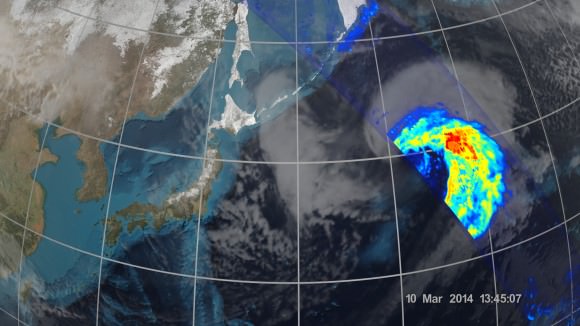
The 3850 kilogram GPM observatory is the first satellite designed to measure light rainfall and snow from space, in addition to heavy tropical rainfall.
The data were released following check out and activation of the satellites pair of instruments.
“GPM’s precipitation measurements will look like a CAT scan,” Dr. Dalia Kirschbaum, GPM research scientist, told me during a prelaunch interview with the GPM satellite in the cleanroom at NASA’s Goddard Space Flight Center in Greenbelt, Md.
“The radar can scan through clouds to create a three dimensional view of a clouds structure and evolution.”
The $933 Million GPM observatory will provide high resolution global measurements of rain and snow every 3 hours. It is a joint venture between NASA and JAXA.
It will collect a treasure trove of data enabling the most comprehensive measurements ever of global precipitation – and across a wide swath of the planet where virtually all of humanity lives from 65 N to 65 S latitudes.
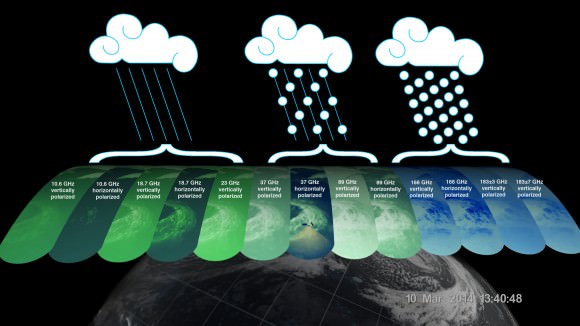
GPM orbits at an altitude of 253 miles (407 kilometers) above Earth – quite similar to the International Space Station (ISS).
GPM is the lead observatory of a constellation of nine highly advanced Earth orbiting weather research satellites contributed by the US, Japan, Europe and India.
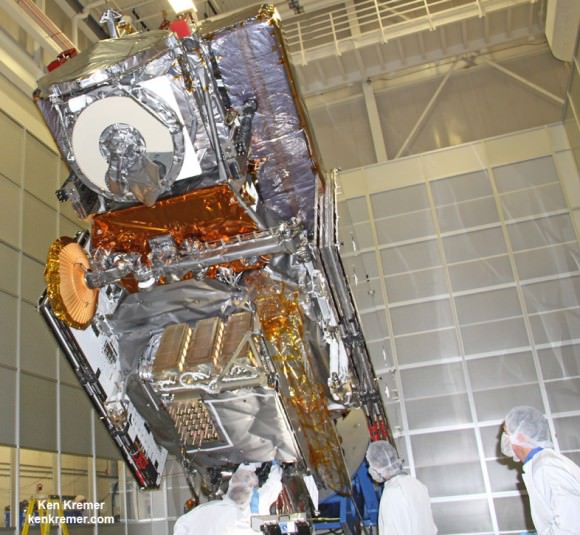
Stay tuned here for Ken’s continuing GPM, Curiosity, Opportunity, Chang’e-3, SpaceX, Orbital Sciences, LADEE, MAVEN, MOM, Mars and more planetary and human spaceflight news.
Learn more at Ken’s upcoming presentations at the NEAF convention on April 12/13 and at Washington Crossing State Park, NJ on April 6. Also at the Quality Inn Kennedy Space Center, Titusville, FL, March 29.
When Doves Fly: Swarm Of Tiny Satellites Shot From Space Station
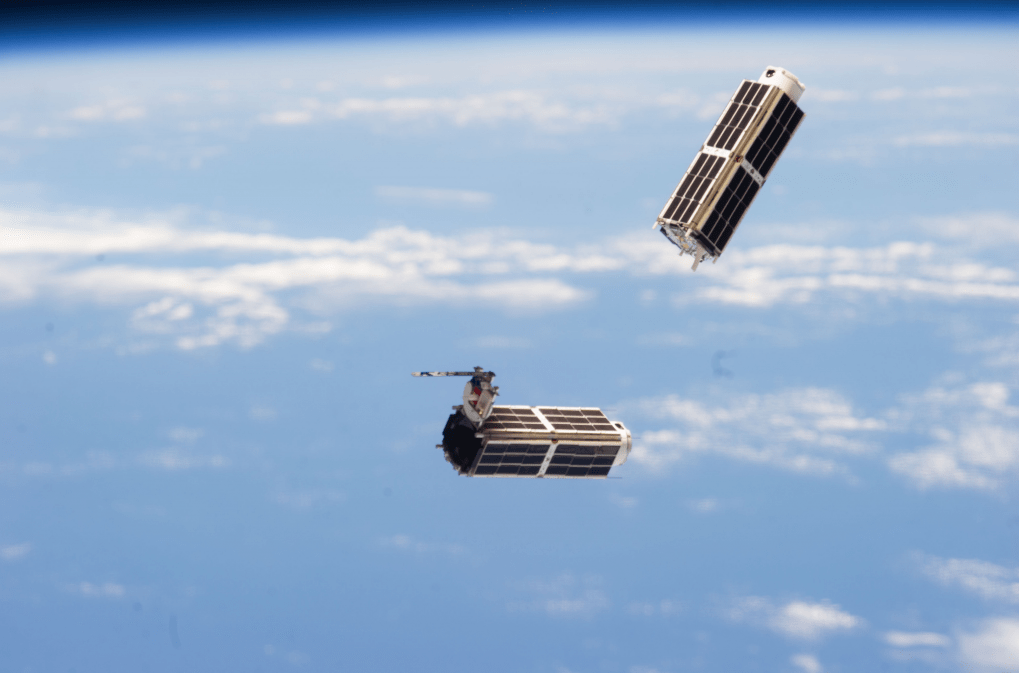
Astronauts fired up the International Space Station’s Yard-a-Pult (actually, we mean the Japanese Kibo arm’s satellite launcher) this week to send out a flock of Doves or tiny satellites that take pictures of the Earth below. An incredible 28 satellites from Planet Labs of San Francisco are expected to swarm into orbit — the largest fleet yet, NASA says — but there have been delays in launching some of them.
The aim? To provide Earth observation information for any purpose that is needed, whether it’s disaster relief or looking to learn more about the Earth’s environment. Planet Labs and NASA say that commercial applications could include real estate, mapping, construction and oil and gas monitoring.
Deployments of two satellites each began on Tuesday and Wednesday, but NASA noted there are “glitches” (which the agency didn’t specify) that are holding up the launch of other ones. There’s no estimated date yet for sending out the rest of the satellites.
“We believe that the democratization of information about a changing planet is the mission that we are focused on, and that, in and of itself, is going to be quite valuable for the planet,” stated Robbie Schingler, co-founder of Planet Labs.
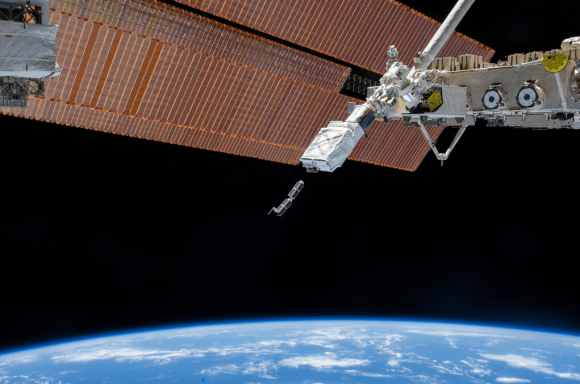
Flock 1 is a customer of the NanoRacks CubeSats program. CubeSats are small satellites that heavily rely on computer miniaturization to do the job of Earth observation and telecommunication that previously was the province of much larger and more expensive satellites. NanoRacks provides space both inside and outside the station for research experiments.
Expedition 38’s Rick Mastracchio and Koichi Wakata both commented on the unusual launches. “Two small satellites are deployed from our launcher here on the space station. Each a little bigger than loaf of bread,” Mastracchio tweeted, while Wakata wrote, “Congratulations on the successful deploy of the satellites by the NanoRacks CubeSat Deployer and Kibo robotics!”
For more information on Flock 1, check out the Planet Labs website. You can also check out an animation of how NanoRacks CubeSats deploy in the animation below (which includes a clip from the song “We Are Young” by Fun.)

